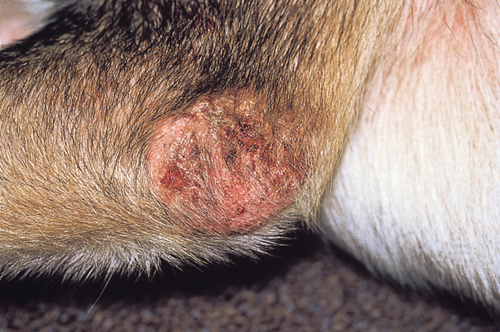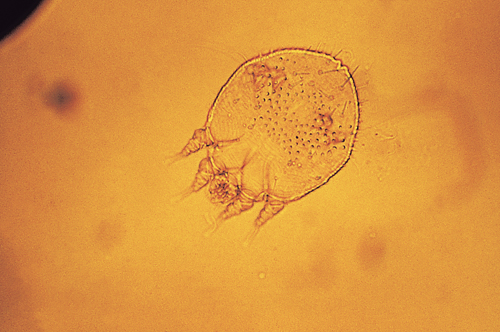Difference between revisions of "Small Animal Dermatology Q&A 11"
Jump to navigation
Jump to search
Ggaitskell (talk | contribs) |
Ggaitskell (talk | contribs) |
||
| Line 12: | Line 12: | ||
|a1= | |a1= | ||
''Sarcoptes scabiei'' mite. | ''Sarcoptes scabiei'' mite. | ||
| − | |l1= | + | |l1=Sarcoptes |
|q2=What clinical signs are associated with this parasite infestation? | |q2=What clinical signs are associated with this parasite infestation? | ||
|a2= | |a2= | ||
| Line 20: | Line 20: | ||
*In many patients, lesions may be absent but thinly haired areas, the ventrum, elbows, and ear margins, are often good sites to find mites. | *In many patients, lesions may be absent but thinly haired areas, the ventrum, elbows, and ear margins, are often good sites to find mites. | ||
*Both deep and superficial skin scrapings should be done to increase the chances of finding the mites. | *Both deep and superficial skin scrapings should be done to increase the chances of finding the mites. | ||
| − | |l2= | + | |l2=Sarcoptic Mange |
|q3=What new diagnostic test is available, and what are the limitations of the test? | |q3=What new diagnostic test is available, and what are the limitations of the test? | ||
|a3= | |a3= | ||
Revision as of 18:05, 6 June 2011
| This question was provided by Manson Publishing as part of the OVAL Project. See more small animal dermatological questions |
An intensely pruritic dog was presented for examination. The dog’s pruritus developed acutely approximately 3 weeks ago. The dog had no history of skin disease prior to this episode. The dog was normal on physical examination except for being intensely pruritic and having ‘scaly’ elbows. The organism shown was found on a skin scraping from the elbow of the patient.
| Question | Answer | Article | |
| What is the organism? | Sarcoptes scabiei mite. |
Link to Article | |
| What clinical signs are associated with this parasite infestation? |
|
Link to Article | |
| What new diagnostic test is available, and what are the limitations of the test? | Recently, an in vitro serum antibody test was marketed in Sweden for the diagnosis of this parasite. The test is reported to have a sensitivity of 83% and a specificity of 92% (Curtis, 2001). |
[[|Link to Article]] | |

